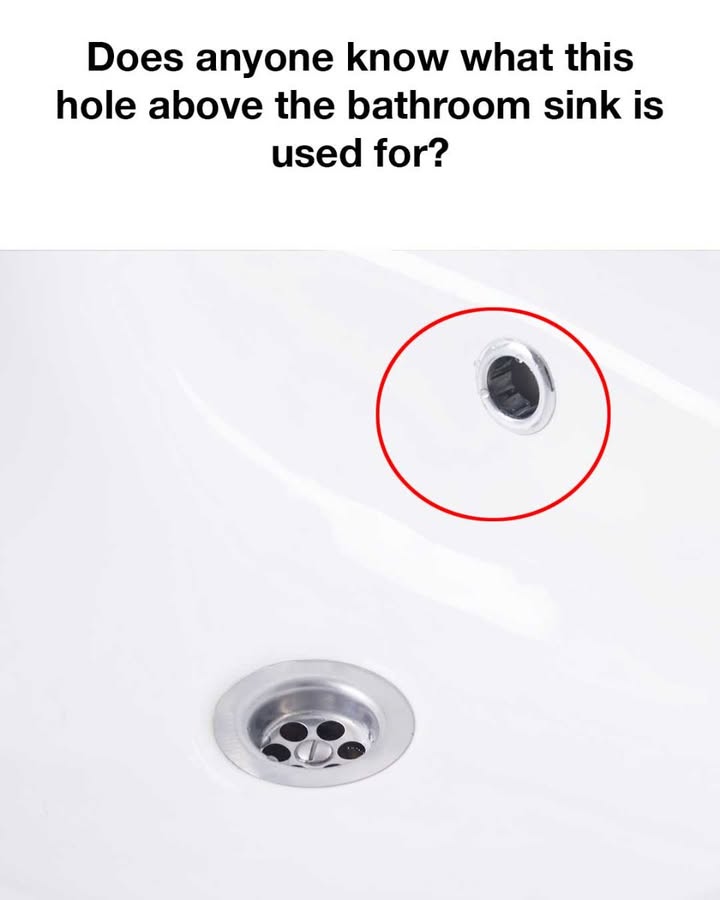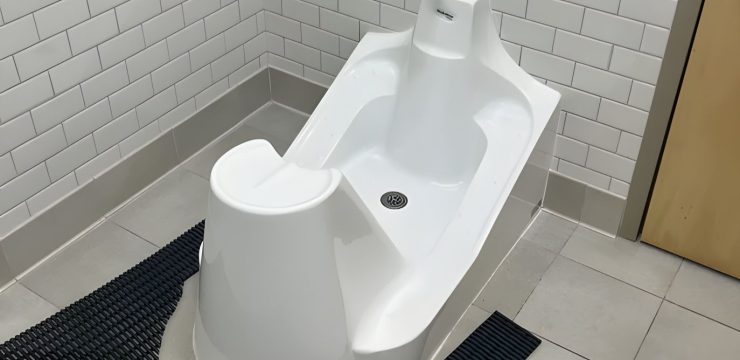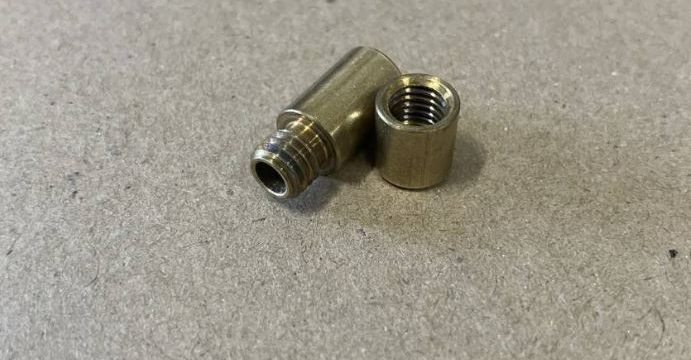Most people glance right past it without giving it a second thought, but if you’ve ever looked closely at your bathroom sink, you might’ve noticed a small hole located just beneath the faucet and above the basin. It’s easy to dismiss as unimportant or even purely decorative, but that little hole is actually a crucial part of your sink’s design.

Despite its subtle appearance, this feature—known as the overflow drain—is essential for preventing a whole range of plumbing headaches. Many folks have their own ideas about what the hole is for. Some believe it’s an air vent for the plumbing system, others think it’s an emergency drainage point, and a few even assume it’s just part of the aesthetic. While all these guesses point in the right direction, the actual function is even more useful. The overflow drain acts as a backup system to keep water from spilling out of the sink and onto your floors. Let’s say your child accidentally leaves the tap running or your main drain gets clogged—without the overflow drain, your bathroom could flood in minutes. This small hole gives water a secondary route back into your home’s plumbing system, preventing costly damage to your cabinets, flooring, and more. The idea behind the overflow drain isn’t new.
In the early days of indoor plumbing, sinks didn’t have this feature, and households frequently faced water damage because there was nothing to stop an overflowing sink. As plumbing technology advanced, designers saw the need for a safety mechanism and began incorporating overflow drains into bathroom sink designs. This improvement not only made bathrooms safer but also helped maintain the structural integrity of homes by reducing the risk of water-related damage.
The way the overflow drain works is simple but highly effective. When the sink is filling faster than it can drain—either due to a clog or simply user error—the overflow hole provides a secondary path for water to escape. This water is redirected down into the plumbing system, keeping it from spilling over the edge of the basin. It’s a feature you probably never think about—until the day you really need it. Depending on the sink’s design and manufacturer, overflow drains can look a little different. Some are clearly visible as a small circular hole right across from the faucet. Others are tucked away on the side or designed to blend in with the contours of the basin. Regardless of their location or look, all overflow drains serve the same essential function.
These variations allow homeowners to choose sink styles that suit their taste while still benefiting from this hidden safeguard. Of course, like any part of your plumbing, the overflow drain isn’t immune to issues. Over time, it can become blocked with dust, debris, soap scum, or mineral deposits—especially if you live in an area with hard water. If your sink starts draining slowly or water pools in places it shouldn’t, the overflow drain might be clogged. Thankfully, it’s fairly easy to clean. A pipe cleaner, small brush, or even a toothbrush can help you dislodge gunk from the hole. And remember—avoid dumping strong chemicals down your drains, as they can corrode pipes and worsen blockages. Routine cleaning and occasional inspections will keep your sink running smoothly. Maintaining the overflow drain is part of keeping your bathroom sink in good working order. Every few weeks, take a moment to inspect the hole and make sure there’s no visible buildup. If you notice unpleasant smells or sluggish drainage, give the drain a quick clean. And if problems persist, don’t hesitate to call a plumber. Investing in a little maintenance now can save you from bigger headaches down the line. At the end of the day, the tiny hole just under your sink faucet might seem like no big deal, but it plays a huge role in protecting your bathroom. The overflow drain is a simple yet powerful tool that guards against spills, keeps your sink functioning as it should, and adds an important layer of safety to your plumbing system. So, the next time you spot that little opening, remember—it’s not useless at all. It’s quietly doing its job, day in and day out, to keep your home dry and damage-free.





